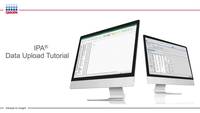Tutorials
Easy and fast somatic variant calling, interpretation and reporting (multiple languages available)
1,491 views
This live demonstration will introduce the QIAGEN CLC Genomics Workbench and how to generate variant profiles in a Variant Call Format (VCF), starting from next-generation sequencing (NGS) data. We will provide examples of data generated from QIAseq library preps, although it works with any kit provider. Then, the variant profiles will be interpreted using QIAGEN Clinical Insight Interpret (QCI-I), a web-based tool that prioritizes and classifies variants based on a given biological context and professional guidelines, respectively, to generate an exportable report containing the most clinically relevant mutations related to a given disease.
During the live demo we will cover:
QIAGEN CLC Genomics Workbench
How to import data
Available references and plugins
Individual tools versus analysis workflows
How to run samples in batch
Data visualization
How to export data
QIAGEN Clinical Insight Interpret (QCI-I)
The QIAGEN Knowledge Base
How to upload data
Variant classification using professional guidelines
Clinical report generation
Related videos
Tutorials
Data Formatting in IPA
Learn how to format your dataset for upload and subsequent analysis in IPA....
Tutorials
Getting started
Learn how to get started using CLC Genomics workbench and CLC Main Workbench....
QIAGEN IPA
Data Upload in IPA
Learn how to upload your dataset into IPA. In this video tutorial, you will...
Tutorials
Understanding the P-Value of Overlap Statistic in IPA
Learn how to interpret your p-value of overlaps results in IPA. You can gain...



